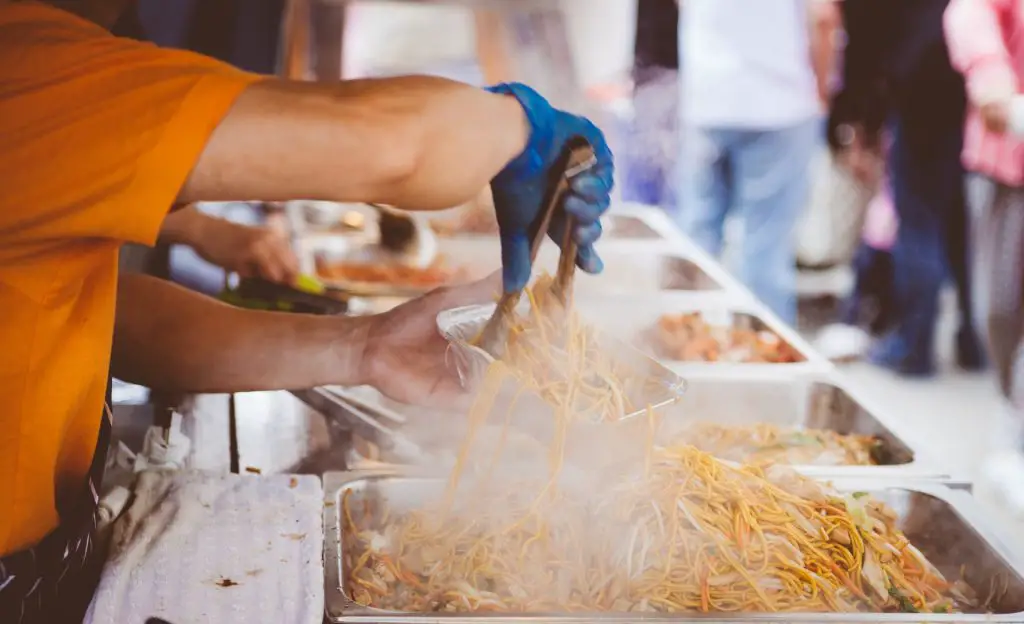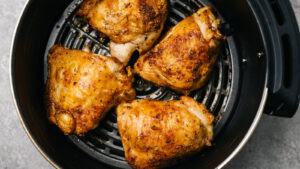Lo Mein, a beloved dish in Chinese cuisine, has captured the hearts and palates of food enthusiasts worldwide. This flavorful and satisfying noodle dish, often featuring a delightful combination of vegetables, protein, and a savory sauce, is a staple in Chinese-American restaurants and takeout menus. While it’s easy to succumb to the convenience of ordering takeout, there’s a unique joy in preparing this dish from scratch at home.
In this comprehensive guide, we will explore the history of Lo Mein, delve into the essential ingredients, walk you through the step-by-step process of making homemade Lo Mein noodles, and provide tips for achieving the perfect balance of flavors and textures. Get ready to embark on a culinary adventure as we unravel the secrets to crafting irresistible Lo Mein noodles in the comfort of your own kitchen.
The Origins of Lo Mein
Lo Mein, which translates to “stirred noodles” in Cantonese, originated in China and has a rich history dating back centuries. While the exact origins are somewhat elusive, the dish is believed to have originated in the Guangdong province, known for its diverse and flavorful cuisine.
In traditional Chinese cooking, Lo Mein was often made with wheat noodles, stir-fried with a variety of ingredients such as vegetables, meat, and seafood. The dish gained popularity and evolved as it made its way to different regions, eventually becoming a symbol of Chinese comfort food.
Essential Ingredients
Before we embark on the journey of making Lo Mein noodles from scratch, let’s gather the essential ingredients that will contribute to the dish’s authentic flavor and texture.
Noodles:
Traditional Chinese egg noodles are the preferred choice for authentic Lo Mein. However, if you’re unable to find them, you can use fresh or dried wheat noodles as a substitute.
Protein:
Choose your preferred protein to add substance to your Lo Mein. Options include sliced chicken, beef, shrimp, or tofu for a vegetarian version.
Vegetables:
A colorful medley of vegetables enhances both the visual appeal and nutritional value of your Lo Mein. Common choices include bell peppers, broccoli, carrots, snap peas, and green onions.
Aromatics:
Garlic, ginger, and green onions form the aromatic base of the dish, infusing it with depth and complexity.
Sauce:
The sauce is the soul of Lo Mein. Combine soy sauce, oyster sauce, sesame oil, and a touch of sugar to achieve the perfect balance of salty, savory, and sweet flavors.
Cooking Oil:
Use a high-smoke-point oil such as vegetable or peanut oil for stir-frying the ingredients.
Now that we have our ingredients assembled, let’s dive into the step-by-step process of making Lo Mein noodles from scratch.
Making Homemade Lo Mein Noodles
Step 1: Prepare the Homemade Noodles
Ingredients:
2 cups all-purpose flour
2 large eggs
1/2 teaspoon salt
Water (as needed)
Instructions:
Create the Dough:
In a large mixing bowl, combine the all-purpose flour and salt. Make a well in the center and crack the eggs into it.
Mix the Dough:
Gradually incorporate the flour into the eggs, mixing with a fork or your hands. Add water, a tablespoon at a time, if needed, until the dough comes together.
Knead the Dough:
Transfer the dough to a floured surface and knead for about 8-10 minutes, or until it becomes smooth and elastic.
Rest the Dough:
Wrap the dough in plastic wrap and let it rest at room temperature for at least 30 minutes. This allows the gluten to relax, making it easier to roll out the noodles.
Roll Out the Noodles:
Divide the rested dough into smaller portions. Roll out each portion into a thin sheet, dusting with flour as needed to prevent sticking. Once rolled out, fold the sheet and cut it into thin strips to form your homemade noodles.
Cook the Noodles:
Boil the noodles in a pot of salted water for 3-5 minutes or until they are cooked but still have a slight bite to them. Drain and rinse with cold water to stop the cooking process. Set aside.
Step 2: Prepare the Ingredients
Ingredients:
1 cup sliced chicken, beef, shrimp, or tofu
2 cups mixed vegetables (bell peppers, broccoli, carrots, snap peas)
3 cloves garlic, minced
1 tablespoon ginger, minced
1/2 cup green onions, sliced
Instructions:
Preheat the Wok:
Heat a wok or a large skillet over high heat. Add a tablespoon of cooking oil and swirl to coat the surface.
Stir-Fry the Protein:
Add the sliced protein to the hot wok and stir-fry until fully cooked. Remove the cooked protein from the wok and set aside.
Sauté Aromatics:
In the same wok, add a bit more oil if needed. Sauté the minced garlic and ginger until fragrant.
Add Vegetables:
Stir in the mixed vegetables and cook until they are tender-crisp. The goal is to retain their vibrant colors and crisp texture.
Step 3: Assemble the Lo Mein
Ingredients:
Cooked homemade noodles
Stir-fried protein and vegetables
1/4 cup soy sauce
2 tablespoons oyster sauce
1 tablespoon sesame oil
1 tablespoon sugar
Salt and pepper to taste
Instructions:
Combine Sauce Ingredients:
In a small bowl, whisk together the soy sauce, oyster sauce, sesame oil, and sugar. Adjust the seasoning with salt and pepper to taste.
Bring It All Together:
Add the cooked homemade noodles to the wok with the stir-fried protein and vegetables. Pour the sauce over the ingredients and toss everything together until well coated.
Finish with Green Onions:
Sprinkle sliced green onions over the top and toss again to distribute the flavors evenly.
Serve Hot:
Transfer your homemade Lo Mein to a serving platter and serve immediately, garnished with additional green onions if desired.
Tips for Perfect Lo Mein
Fresh Ingredients: Use the freshest ingredients available for the best flavor and texture. Fresh vegetables and high-quality protein make a significant difference in the final dish.
Hot Wok: Ensure your wok or skillet is hot before adding ingredients. A hot cooking surface is essential for achieving the coveted stir-fry texture.
Uniform Cutting: Cut your ingredients into uniform sizes to ensure even cooking. This is especially important for vegetables and protein.
Customization: Feel free to customize the recipe to suit your taste preferences. Add more or less of the sauce ingredients to achieve the desired flavor balance.
Experiment with Noodles: While homemade noodles offer a unique touch, you can also use store-bought fresh or dried noodles for convenience.
Congratulations! You’ve successfully mastered the art of making Lo Mein noodles from scratch. The combination of homemade noodles, savory sauce, and a medley of fresh ingredients creates a dish that’s not only delicious but also deeply satisfying. As you continue to refine your skills, don’t hesitate to experiment with different proteins, vegetables, and seasonings to make this classic Chinese dish your own.
Whether you’re preparing a cozy dinner for yourself or impressing friends and family with your culinary prowess, homemade Lo Mein is sure to be a crowd-pleaser. Embrace the joy of creating a restaurant-quality dish in your own kitchen, and savor the rich flavors and textures of this iconic Chinese comfort food.
Elevating Your Lo Mein Experience
Now that you’ve mastered the basic art of crafting homemade Lo Mein, let’s explore ways to elevate your experience by experimenting with additional techniques, ingredients, and complementary dishes.
Enhance with Umami:
Consider incorporating umami-rich ingredients to deepen the savory flavors of your Lo Mein. Add a splash of mushroom soy sauce or a sprinkle of dried shiitake mushrooms for an extra layer of depth. Umami-rich elements can take your dish to the next level and create a more complex flavor profile.
Play with Texture:
Texture plays a crucial role in the overall enjoyment of Lo Mein. To add a delightful crunch, toss in some bean sprouts, water chestnuts, or crushed peanuts just before serving. The contrast of soft noodles with crunchy elements creates a satisfying and dynamic eating experience.
Experiment with Noodle Types:
While traditional Chinese egg noodles are classic, don’t hesitate to experiment with different noodle varieties. Udon noodles, rice noodles, or even ramen noodles can bring a unique twist to your dish. Each type of noodle offers its own texture and flavor, allowing you to tailor your Lo Mein to your preferences.
Infuse with Fresh Herbs:
Fresh herbs can brighten up the flavors of your Lo Mein. Consider adding cilantro, Thai basil, or mint to the dish just before serving. The aromatic herbs will impart a burst of freshness that complements the savory and umami elements of the meal.
Spice It Up:
For those who enjoy a bit of heat, don’t shy away from adding chili oil, sriracha, or red pepper flakes to your Lo Mein. The subtle heat will not only add excitement to each bite but also enhance the overall flavor profile.
Pair with a Side Dish:
Complement your Lo Mein with a side dish that balances the meal. Steamed dumplings, spring rolls, or a light cucumber salad can enhance the dining experience by providing a variety of flavors and textures. This combination creates a well-rounded and satisfying meal.
Garnish Creatively:
Presentation is key when it comes to making your dish visually appealing. Garnish your Lo Mein with additional sliced green onions, sesame seeds, or a drizzle of sesame oil just before serving. Not only does it add a finishing touch, but it also elevates the overall aesthetic of the dish.
Explore Regional Variations:
Chinese cuisine is incredibly diverse, with each region offering its own take on classic dishes. Take a culinary journey by exploring regional variations of Lo Mein. Whether it’s the seafood-infused flavors of Cantonese-style Lo Mein or the spicier notes of Sichuan-style Lo Mein, experimenting with different regional recipes can broaden your culinary horizons.




